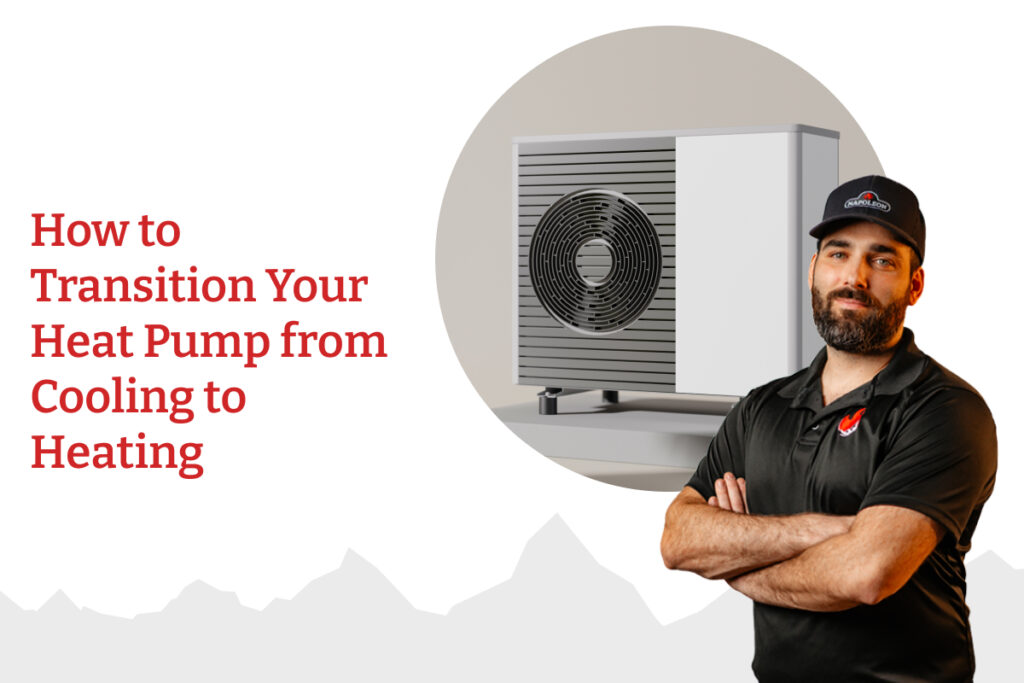A heat pump is a highly efficient system that provides both heating and cooling for your home. Instead of generating heat like a furnace, it transfers heat in or out of your home depending on the season—keeping you comfortable year-round. If you don’t currently have a heat pump, you can learn more about how they work and why they’re a smart choice for Manitoba homes by visiting Whyte Ridge HVAC’s heat pump page.
If you already have one, this article is for you. At Whyte Ridge HVAC, the fall season often means crisp mornings and cozy evenings. It’s the perfect time to gently shift your home from nice and cool to nice and warm with your heat pump. Making this switch now ensures smoother performance later, better comfort, and peace of mind as fall grows colder. Let’s walk through a simple step-by-step guide to help you make the change, without any hassle.
Why Now Is the Perfect Time
When the summer heat fades, your home will naturally shift into fall habits. Closed windows, more cozy nights, and that hint of chill in the air. When you’re relying on your heat pump to pivot from cooling to heating, doing it early helps your system adjust efficiently and avoid unnecessary wear. Plus, it just feels comforting to settle into a smoothly heated space as leaves begin to fall.
Step-by-Step Guide to Switching Your Heat Pump
1. Check the Thermostat Mode
Start by going to the thermostat and switching it from “cool” to “heat” mode. Modern smart thermostats are especially helpful, as you can set seasonal schedules in advance. Making sure your fan is set to “auto” rather than “on” will make it so that the system cycles properly and doesn’t run continuously, which would cause an unnecessary increase in your energy bill.
2. Replace or Clean the Air Filter
Filtered air is efficient air. After months of summer use, your filters may be clogged. Dirty filters usually need to be replaced every few months, as they reduce airflow and cause your heat pump to work harder than it needs to. Replacing it now will not only improve efficiency but will also help to maintain cleaner indoor air quality.
3. Power Off and Clean the Outdoor Unit
Turn off your AC and/or heat pump at the outdoor disconnect switch. Then you can clean it, checking for grass, debris around the unit to make sure that it can breathe freely all season long. Be sure to clean its fins or coils with a soft brush or gentle rinse, carefully working to avoid damaging any delicate parts.
4. Run a Test Cycle
Set your thermostat to around room temperature and run a short test. Listen for a smooth startup and warm airflow from the vents. This simple run-through can help catch small issues now rather than in the middle of winter. Unusual smells or sounds emanating from your vents could be a sure sign that something is not quite right.
5. Inspect the Reversing Valve (Behind the Scenes)
The reversing valve is the unsung hero that flips refrigerant flow from cooling to heating. It’s typically controlled by the thermostat’s “O” or “B” terminal and should activate automatically. If your system doesn’t switch despite changing modes, a faulty reversing valve or wiring issue could be the culprit.
Troubleshooting Tips
If your home still seems cold there are a few things you can do to troubleshoot. The first thing to do if you notice cool or uneven air is to check your thermostat to make sure it is working properly. If it is and you are still having issues, it could be a problem with your reversing valve. If your system seems to not be running at all, you may want to check the thermostat wiring and if it is receiving power. If problems persist, it may be a good idea to contact a professional for a pre-season check-up.
Fall Maintenance Tips: Quick Checklist
- Change or clean your air filters.
- Clean debris around the outdoor unit.
- Switch the thermostat to heat and fan setting to “auto”.
- Run a brief heating test.
- Monitor for smooth operation in order to catch any irregularities early.
- If anything seems out of place or unusual, contact a professional.
Want Extra Peace of Mind?
Our HVAC technicians go above and beyond the norm to clean coils and drain lines, ensure optimal refrigerant levels, and inspect for wear and adjust performance. Switching your heat pump from cooling to heating doesn’t have to be stressful or technical. With just a few simple steps, you can accomplish a cozy, efficient transition for your home this fall. If you are ready to go, or need some help, Whyte Ridge HVAC is always here to guide you. Enjoy that first warm breeze of fall, knowing your home’s comfort is in great hands.
